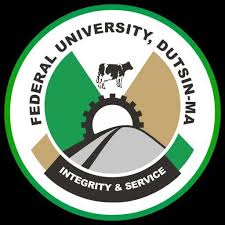Agric Keypoints: Agricultural Extension; Agriculture is the backbone of many West African economies, providing livelihoods for the majority of the population and serving as a crucial source of food security. However, the region faces numerous challenges, including low agricultural productivity, poverty, and food insecurity.
Study other Agric keypoints here for JAMB, WAEC, IJMB
Agric Keypoints: Agricultural Extension
In the quest for sustainable agricultural development, the role of agricultural extension cannot be underestimated.
a. Meaning and Importance of Agricultural Extension
Meaning: Agricultural extension is a dynamic and multifaceted approach aimed at providing farmers with the knowledge, skills, and resources they need to improve their farming practices, boost productivity, and enhance their overall well-being. It acts as a bridge between agricultural research and the farming community, ensuring that the latest scientific insights are translated into practical solutions.
Importance:
- Knowledge Transfer: One of the primary functions of agricultural extension is the dissemination of up-to-date information and best practices. This knowledge empowers farmers to make informed decisions about crop management, livestock care, and sustainable farming techniques.
- Skill Development: Through extension services, farmers acquire the necessary skills to adopt modern agricultural practices. This leads to increased crop yields, improved livestock management, and overall agricultural development.
- Technology Dissemination: Extension agents introduce farmers to innovative technologies and practices, such as drought-resistant seeds and efficient irrigation methods, which contribute to long-term food security and sustainability.
- Income Generation: By enhancing productivity and reducing post-harvest losses, agricultural extension helps farmers increase their incomes, thereby reducing poverty and improving the standard of living in rural communities.
- Community Development: Agricultural extension fosters the development of cohesive farming communities by promoting cooperative efforts, knowledge sharing, and collective action among farmers.
b. The Role of Agricultural Development Programs, Universities, Research Institutes, and Farmers’ Organizations (Cooperative Societies) in Agricultural Extension
- Agricultural Development Programs: These government-led initiatives play a pivotal role in funding and coordinating extension services. They support research, training, and knowledge dissemination to farmers.
- Universities: Academic institutions engage in research and development, providing valuable insights and innovations that can be shared with farmers through extension programs.
- Research Institutes: These institutions focus on agricultural research and innovation, creating new technologies and practices that can be disseminated through extension services.
- Farmers’ Organizations (Cooperative Societies): These organizations facilitate collective learning, bulk purchasing of inputs, and marketing of produce. They often collaborate with extension services to benefit their members.
c. Extension Methods, Including Demonstration Plots, Use of Visual Aids, Mass Media, etc.
- Demonstration Plots: These are physical plots of land where new agricultural practices or technologies are showcased. Farmers can observe and learn by seeing the results firsthand.
- Use of Visual Aids: Visual aids such as posters, pamphlets, and videos help convey information effectively. They simplify complex concepts and are particularly useful for illiterate farmers.
- Mass Media: Radio, television, and mobile phones are powerful tools for reaching a wider audience. Radio broadcasts, for example, can disseminate information on weather forecasts, market prices, and agricultural practices.
- Field Visits and Training Workshops: Extension agents visit farms to provide hands-on training and guidance to farmers. Training workshops and seminars also offer opportunities for interactive learning.
d. Problems of Agricultural Extension in West Africa and Possible Solutions
i. Identify the Importance of Agricultural Extension
The importance of agricultural extension in West Africa cannot be overstated. It is a critical catalyst for sustainable agricultural development, poverty reduction, and food security in the region.
ii. Analyse the Roles of Government and Non-Governmental Organizations in Agricultural Extension Education
- Government Role: Governments in West Africa should increase funding for extension services, ensure the training and motivation of extension agents, and create policies that promote sustainable farming practices.
- NGO Role: Non-governmental organizations can complement government efforts by targeting specific communities, promoting gender equality in agricultural extension, and innovating with technology-driven solutions.
iii. Differentiate Between the Various Extension Methods
- Demonstration Plots: These should be expanded and tailored to local needs, showcasing climate-resilient crops and sustainable farming practices.
- Visual Aids: Invest in the development of culturally relevant and accessible visual materials, and ensure they are widely distributed.
- Mass Media: Collaborate with local radio and TV stations to broadcast agricultural programs regularly, making information accessible to remote areas.
- Field Visits and Training Workshops: Strengthen the capacity of extension agents and provide them with the necessary tools and resources to conduct effective on-farm training.
iv. Examine the Problems of Agricultural Extension in West Africa
- Limited Resources: Insufficient funding, equipment, and manpower hinder the effectiveness of extension services.
- Access Barriers: Remote and marginalized communities often struggle to access extension services.
- Lack of Technology Integration: Slow adoption of modern technology and data-driven approaches hampers extension programs.
- Gender Inequality: Women, who make up a significant portion of West African farmers, often have limited access to extension services.
v. Provide Possible Solutions
- Increased Funding: Governments should allocate more resources to agricultural extension, focusing on the recruitment and training of extension agents.
- Community Outreach: Extension services should be decentralized, with a focus on reaching underserved areas and marginalized groups.
- Digital Solutions: Embrace technology such as mobile apps and SMS-based services to reach a broader audience and provide real-time information.
- Gender-Inclusive Programs: Implement gender-sensitive extension programs to empower women farmers and ensure their equitable access to resources and knowledge.
In conclusion, agricultural extension is indispensable for the growth of the agricultural sector in West Africa. By recognizing its importance, enhancing collaboration between stakeholders, diversifying extension methods, and addressing its challenges, the region can unlock its agricultural potential, improve food security, and uplift the livelihoods of its farming communities.








